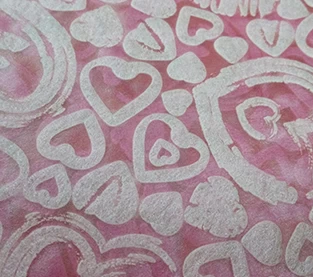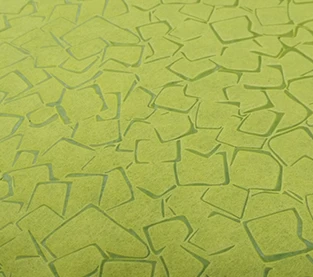Product: ES Material Fiber Nonwoven Fabric For Packaging
Raw Material: PP+PE
Nonwoven Technology: thermal bonded
Dotted Design: dot or plain
Gram: 25 gsm - 30 gsm
Color: White
Specification: custom
Sample: Can be provided without charge, freight to be collect
Applications:
Medical(20-60gsm): face masks,diapers,bed sheets,curtains,pillow covers,sanitary,etc
Packaging(25-30gsm): tea bag, coffee bag/filter paper, dust-proof covers.etc
Product: ES Thermal Bonded Non Woven Fabric For Tea Bag
Raw Material: PP+PE
Nonwoven Technology: thermal bonded
Dotted Design: dot or plain
Gram: 25 gsm - 30 gsm
Color: White
Specification: custom
Sample: Can be provided without charge, freight to be collect
Applications:
Medical(20-60gsm): face masks,diapers,bed sheets,curtains,pillow covers,sanitary,etc
Packaging(25-30gsm): tea bag, coffee bag/filter paper, dust-proof covers.etc
Product: Composite Non Woven Paper Desiccant Packaging Material
MOQ: 1000 kg
Material: Composite Non Woven Paper
Specification: Custom sizes.
Design: Welcome custom logo and design. Welcome OEM.
Color: Full Color of CMYK,Pantone Color as customer requirements
Weight: Based on size & material,thickness
Delivery Time: 10-15 days after confirmed the final artwork and order
Product: Desiccant Wrapping Paper
MOQ: 1000 kg
Material: DuPont Material
Specification: Custom sizes.
Design: Welcome custom logo and design. Welcome OEM.
Color: Full Color of CMYK,Pantone Color as customer requirements
Weight: Based on size & material,thickness
Delivery Time: 10-15 days after confirmed the final artwork and order
Product: Bi-component Non Woven Fabric Desiccant Packaging Material
MOQ: 1000 kg
Material: Bi-component Non Woven Fabric
Specification: Custom sizes.
Design: Welcome custom logo and design. Welcome OEM.
Color: Full Color of CMYK,Pantone Color as customer requirements
Weight: Based on size & material,thickness
Delivery Time: 10-15 days after confirmed the final artwork and order
Product: Spunbond Non Woven Fabric Custom Desiccant Packaging Material
MOQ: 1000 kg
Material: Spunbond Non Woven Fabric
Specification: Custom sizes.
Design: Welcome custom logo and design. Welcome OEM.
Color: Full Color of CMYK,Pantone Color as customer requirements
Weight: Based on size & material,thickness
Delivery Time: 10-15 days after confirmed the final artwork and order
The adhesion of the fiber web after hot rolling bonding can be clearly seen by an electron microscope, and the integrity of the fiber at the bonding point is not broken, but a certain deformation occurs. The degree of deformation is related to the hot rolling temperature and pressure. At the same time, a certain amount of fibers are sheared during the bonding process. This is mainly related to the combination of hot rolling temperature and pressure. Low temperatures and high pressures increase the amount of fiber that is sheared.
Studies on the thermal bonding process of polypropylene fibers have shown that about 10% of the crystals, the most unstable crystalline portion and the amorphous portion, melt and become flowable. The stable crystal portion is toughened by the action of temperature and pressure. Therefore, the more stable crystals are not melted, the better the integrity of the fibers after hot rolling bonding is maintained.


After hot-rolling bonding(Non Woven Polypropylene Roll Wholesale), the bonding occurs only at the point of intersection of the fiber or the embossing roll. The unbonded portion maintains the original shape and properties of the fiber, so the hot-rolled bonded nonwoven fabric(PP Non Woven Material Factory) has a good The softness, gas permeability and elasticity of the fiber in the thermal bonding process, due to the thermal and mechanical effects of the fiber, its microstructure will undergo certain changes, the performance of the fiber will inevitably undergo a certain degree of change. Studies on the thermal bonding(Non Woven Spunbond Polypropylene Manufacturer) process of polypropylene fibers have shown that at 150 °C, the web will shrink, which is the result of the relaxation of the molecular chain in the amorphous region of the fiber. At higher temperatures, the micro-defective crystal portion begins to melt, causing a sudden and rapid shrinkage of the braze. The degree of orientation of the molecular chain in the amorphous region is related to the bonding temperature. The higher the bonding temperature, the greater the degree of molecular chain de-orientation.
The change in fiber crystallinity after thermal bonding is not only affected by the bonding temperature, but more importantly by the cooling rate. When thermally bonded below the melting point temperature, the crystallinity increases as the bonding temperature increases. Since the molecular motion of the amorphous region becomes easier as the bonding temperature rises, each crystal region grows, and the average grain size reflected in the crystal face direction increases. When the bonding temperature exceeds the melting point, the fibers in the bonding zone melt, and if it is cooled sharply, the relative crystallization rate is slowed down and the crystallinity is lowered.